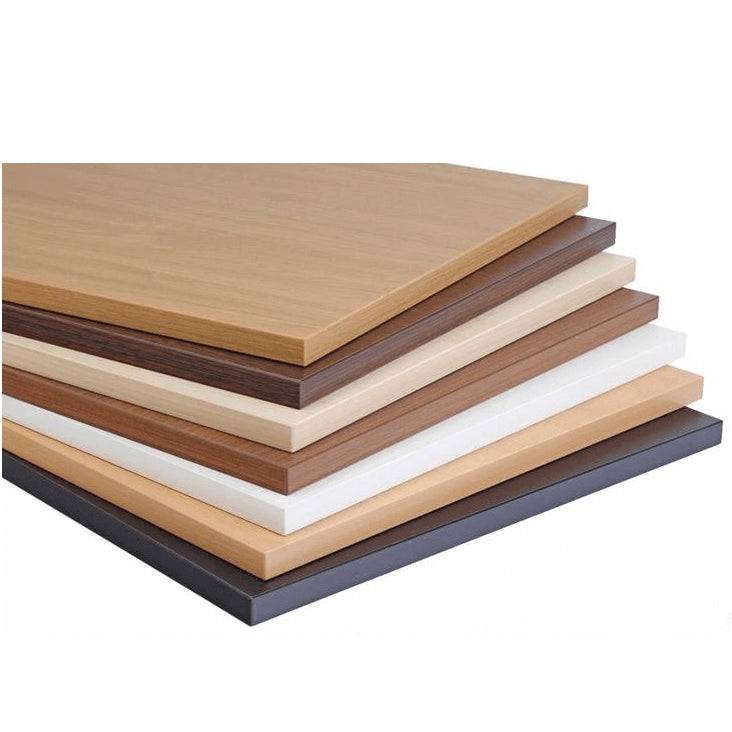The Best Flooring Options for High-Traffic Areas

If you're looking for the best flooring options for high-traffic areas, you might be overwhelmed by the choices available. There are so many factors to consider, such as durability, aesthetics, cost & maintenance. How do you know which flooring type will suit your needs & preferences?
In this blog we'll explore four of the most popular flooring options for high-traffic areas: hybrid flooring, carpet, laminate flooring & natural timber flooring. We'll compare their pros & cons & give you some tips on how to choose the right thickness for each flooring type. By the end of this post, you'll have a better idea of what is the best flooring for high traffic areas.
Do keep in mind that rugs can greatly help with high traffic areas also.
- Rugs can protect your flooring
- Rugs are made to be walked on constantly and can handle high traffic areas
- Rugs come in a variety of colours that can easily match your decor
If you're looking for rugs for sale in Sydney then Adore is your one stop shop!
What is hybrid flooring?
Hybrid flooring is a new & innovative flooring option that combines the best features of laminate & vinyl flooring. It is made of multiple layers, including a core layer of rigid, high-density fibreboard, which provides strength & stability. The top layer is a high-quality, durable vinyl layer that is resistant to scratches, stains, & water.
Hybrid flooring is one of the best flooring options for high-traffic areas because it is:
- 100% waterproof & temperature resistant, which means it can handle spills, humidity & extreme weather conditions.
- Easy to install & maintain, as it does not require nails or glue & can be cleaned with a simple sweep or mop.
- Affordable & sustainable, as it costs less than timber or engineered flooring & uses less natural resources.
- Available in a wide range of natural colours & designs that mimic real timber floorboards or tiles.
Some of the most popular hybrid flooring brands are:
- Lux & Brumby
- Luxury Hybrid
- Cloudwalk
- Lagos
- Florence Rigid
- Highland
- Kenect
- Korlok
- Retreat Aussie
- Seasons

How to choose the right thickness for hybrid flooring?
Hybrid flooring comes in different thicknesses, ranging from 6mm to 8mm. The thickness of hybrid flooring affects its durability, comfort & sound insulation. Generally speaking, thicker hybrid flooring is more durable & comfortable than thinner hybrid flooring, but it also costs more & may require more subfloor preparation.
The best thickness for hybrid flooring depends on your budget, preference & subfloor condition. Here are some guidelines to help you choose:
- If you have a tight budget & a smooth subfloor, you can opt for thinner hybrid flooring (6mm or 7mm) as it will still provide adequate performance & appearance.
- If you want more durability & comfort, or if you have an uneven subfloor, you should choose thicker hybrid flooring (8mm), as it will offer better resistance to wear & tear & more underfoot cushioning.
- If you want more sound insulation, especially if you live in an apartment or have noisy neighbours, you should also go for thicker hybrid flooring (8mm), as it will reduce the noise transmission between floors.

What are the other flooring options for high-traffic areas?
Carpet
Carpet is a soft & cozy flooring option that adds warmth & comfort to any room. It is also one of the most versatile flooring options, as it comes in various colours, textures, patterns & materials.
Carpet is a good option for high-traffic areas because it is:
- Soft & comfortable underfoot, which makes it ideal for bedrooms, living rooms, or playrooms.
- Sound-absorbing & insulating, which helps reduce noise & keep your home warm in winter & cool in summer.
- Easy to install & replace, as it does not require nails or glue & can be cut to fit any space.
However, carpet also has some drawbacks for high-traffic areas:
- It can get dirty easily & harbour dust mites
- high moisture can degrade carpet
Laminate
Laminate flooring is a synthetic product that mimics the look of natural wood. It is composed of several layers of materials, including a wear layer, a decorative layer, a core layer & a backing layer. The wear layer is the topmost layer that protects the floor from scratches, stains & wear & tear. The decorative layer is the one that gives the floor its appearance & colour. The core layer is made of high-density fiberboard or particleboard that provides stability & strength. The backing layer is the bottommost layer that prevents moisture from seeping into the floor.
Laminate flooring comes in various thicknesses, ranging from 6 mm to 12 mm. The thicker the laminate, the more resistant it is to damage & deformation. Thicker laminate also tends to feel more solid & comfortable underfoot. However, thicker laminate also costs more & may require more subfloor preparation.
Some of the advantages of laminate flooring are:
- It is affordable & easy to install.
- It is available in a wide range of styles, colours & patterns.
- It is resistant to fading, staining & moisture.
- It is easy to clean & maintain with regular sweeping & damp mopping.
Some of the disadvantages of laminate flooring are:
- It can be damaged by sharp objects or excessive moisture.
- It can not be refinished and difficult to repair if damaged.

Natural Timber
Natural timber flooring is a type of hardwood flooring that is made from solid wood planks. It is one of the most popular & classic flooring options for high-traffic areas. Natural timber flooring has a natural beauty & warmth that adds value & character to any space.
Natural timber flooring comes in various thicknesses, ranging from 10 mm to 22 mm. The thicker the timber, the more durable & stable it is. Thicker timber also allows for more s&ing & refinishing over time. However, thicker timber also costs more & may require more subfloor preparation.
Some of the advantages of natural timber flooring are:
- It is durable & long-lasting.
- It is available in a wide range of species, grades & finishes.
- It is resistant to wear & tear & can be refinished or repaired if damaged.
- It is eco-friendly & renewable.
Some of the disadvantages of natural timber flooring are:
- It can expensive & difficult to install.
- It is susceptible to scratches, dents & stains.
- It is sensitive to humidity & temperature changes.
There you have it! Hope this information helps you if you have any further questions do not hesitate to contact us!
SHARE:



